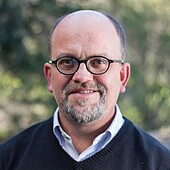This is the first webinar in our new series, The Effects of Plastics on Health.
Petrochemicals have created a wide range of modern products which have made themselves indispensable to society, including plastic, the fastest-growing group of bulk materials in the world. The manufacture of those products absorbs an increasing proportion of the world’s oil and gas. The petrochemical sector accounts for 11% of global final energy demand, and this share is expected to increase in the future driven by sector’s activity growth. Feedstock represents about half of the total energy inputs to the sector, almost 90% of which is oil and gas. Despite its size, the sector continues to take a back seat in the global energy debate. The International Energy Agency (IEA) aims to shed light on this important energy demand area with their recent report, The Future of Petrochemicals. This new study explores the role of the sector in today’s global energy system and how its significance for global energy security and the environment is set to increase on the basis of established trends. Araceli Fernandez Pales, Senior Energy Technology Analyst at the IEA, presented the key findings of the report. She also discussed the path the report draws to an alternative clean technology scenario, which helps achieve different UN sustainable development goals.
Hazardous chemicals are the building blocks of the plastics economy. From chemical intermediates to final plastic product, hazardous chemicals are integral to the majority of plastic products. Mirroring the rapid rise in plastics production is the rapid rise in hazardous chemicals’ production, which is necessary to feed the plastics economy. Yet, pathways exist to reduce the toxicity of plastics. By evaluating chemicals for their inherent hazards and selecting plastics that rely upon less hazardous chemistries, brands and purchasers can detoxify the plastics they use every day. Mark Rossi, Executive Director of Clean Production Action, delved into the toxic life cycle of plastics and tools for identifying safer and greener chemicals.
Chlorine, the backbone of polyvinyl chloride (PVC) plastic, is the world's most impactful chemical industry. The production of chlorine and its derivatives has a massive and growing impact on human health and the environment, from ozone layer depletion to bioaccumulating toxicants to ocean pollution to fenceline disasters. In 2018, the Healthy Building Network (HBN) has been establishing a baseline inventory of this industry through its Chlorine & Building Materials project. Jim Vallette, HBN Research Director, revealed results from this exhaustive study. Attendees gained insights into this industry's markets, trends, alternatives, and impacts, which include an alarming dependence upon two substances, asbestos and mercury, that the environmental community has long sought to eliminate from commerce, and one other, PFAS, that is an emerging high concern.
Featured Speakers
 Araceli Fernandez Pales, MSc, MEng, leads the technology analysis and modelling of energy-intensive industries at the International Energy Agency (IEA) on long-term scenarios with more than ten years’ experience in the Oil & Gas field. Araceli holds a MEng in Chemical Engineering from the Polytechnic University of Valencia and a MSc in Process Engineering from Cranfield University. Before joining the IEA, she worked on process optimization, trouble shooting and emissions monitoring at refinery sites for BP, as well as designing thermal process equipment and steam methane reforming units for green-field refinery and petrochemical projects as an EPC contractor in the Middle East and Europe. She has focused more lately on defining energy efficiency upgrades and plant performance improvement strategies for refinery operators.
Araceli Fernandez Pales, MSc, MEng, leads the technology analysis and modelling of energy-intensive industries at the International Energy Agency (IEA) on long-term scenarios with more than ten years’ experience in the Oil & Gas field. Araceli holds a MEng in Chemical Engineering from the Polytechnic University of Valencia and a MSc in Process Engineering from Cranfield University. Before joining the IEA, she worked on process optimization, trouble shooting and emissions monitoring at refinery sites for BP, as well as designing thermal process equipment and steam methane reforming units for green-field refinery and petrochemical projects as an EPC contractor in the Middle East and Europe. She has focused more lately on defining energy efficiency upgrades and plant performance improvement strategies for refinery operators.
 Mark Rossi, PhD, Executive Director of Clean Production Action, has been part of the Clean Production Action team since 2004. Mark has the unique ability to bring together diverse groups and achieve innovative outcomes. In 2006, he founded BizNGO, a collaboration of organizations who work together to advance safer chemicals and sustainable materials. BizNGO’s listserv now reaches over 1,300 business, health care, government, university, and environmental leaders. Innovative products of BizNGO include the Alternatives Assessment Protocol, Guide to Safer Chemicals, and Plastics Scorecard. Mark is also the co-author of the GreenScreen. Launched in 2007, the GreenScreen is now the gold standard in hazard assessment tools. In 2014, he co-founded the Chemical Footprint Project, the first initiative of its kind to benchmark corporations on their overall chemical management performance.
Mark Rossi, PhD, Executive Director of Clean Production Action, has been part of the Clean Production Action team since 2004. Mark has the unique ability to bring together diverse groups and achieve innovative outcomes. In 2006, he founded BizNGO, a collaboration of organizations who work together to advance safer chemicals and sustainable materials. BizNGO’s listserv now reaches over 1,300 business, health care, government, university, and environmental leaders. Innovative products of BizNGO include the Alternatives Assessment Protocol, Guide to Safer Chemicals, and Plastics Scorecard. Mark is also the co-author of the GreenScreen. Launched in 2007, the GreenScreen is now the gold standard in hazard assessment tools. In 2014, he co-founded the Chemical Footprint Project, the first initiative of its kind to benchmark corporations on their overall chemical management performance.
Mark is the author and co-author of numerous articles, reports, and blogs on advancing safer alternatives to toxic chemicals. Most recently, he authored the United Nations Environment Program’s report, The Business Case for Knowing Chemicals in Products and Supply Chains. Mark is a member of the Massachusetts Toxics Use Reduction Act Advisory Committee and is a Research Fellow at the Lowell Center for Sustainable Production. He received an Environmental Merit Award from the U.S. Environmental Protection Agency Region 1 on behalf of BizNGO’s leadership work on Green Chemistry. Mark’s career includes stints at Tellus Institute, the Toxics Use Reduction Institute, and Health Care Without Harm. His doctorate is in Environmental Policy from the Massachusetts Institute of Technology.
 Jim Vallette, Research Director with the Healthy Building Network, works to understand and explain industry’s impacts on people and the planet. He has investigated most of the world's commodities -- from toxic waste to timber and fish to ozone-depleting chemicals -- around the world. His findings have supported major global victories like the Basel Convention ban on toxic waste trade, the World Bank's ban on overseas fossil fuel extraction finance, and the removal of toxic substances from products. Over the last decade, Jim has helped to develop the Healthy Building Network’s groundbreaking research on what's in building materials, and what the impacts are on building occupants, construction workers, fenceline communities, and the global environment.
Jim Vallette, Research Director with the Healthy Building Network, works to understand and explain industry’s impacts on people and the planet. He has investigated most of the world's commodities -- from toxic waste to timber and fish to ozone-depleting chemicals -- around the world. His findings have supported major global victories like the Basel Convention ban on toxic waste trade, the World Bank's ban on overseas fossil fuel extraction finance, and the removal of toxic substances from products. Over the last decade, Jim has helped to develop the Healthy Building Network’s groundbreaking research on what's in building materials, and what the impacts are on building occupants, construction workers, fenceline communities, and the global environment.
This webinar was moderated by Karen Wang, PhD, director of CHE. It lasted for 70 minutes and was recorded for our call and webinar archive.
